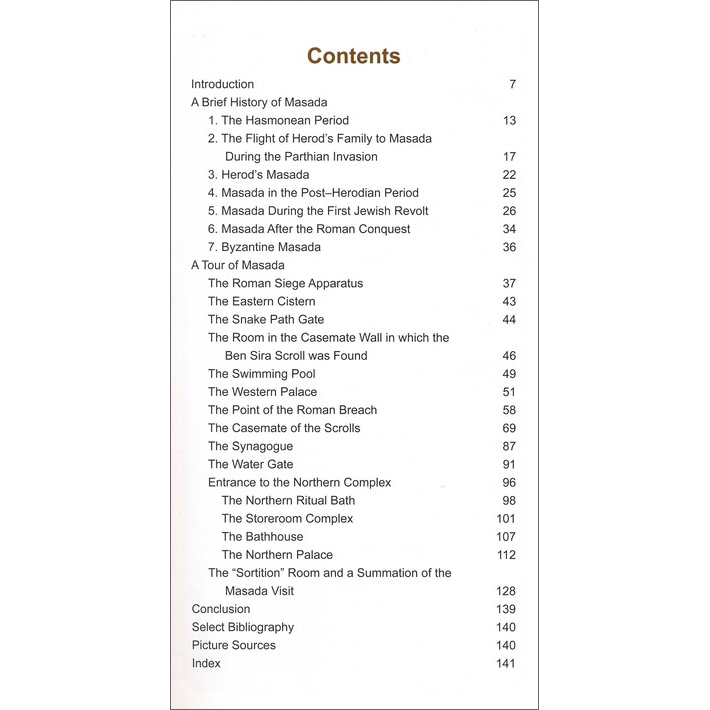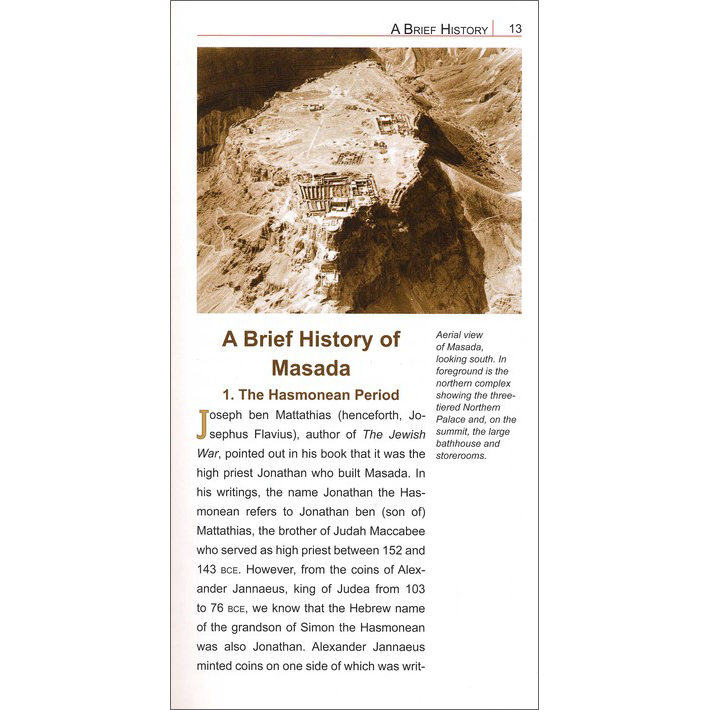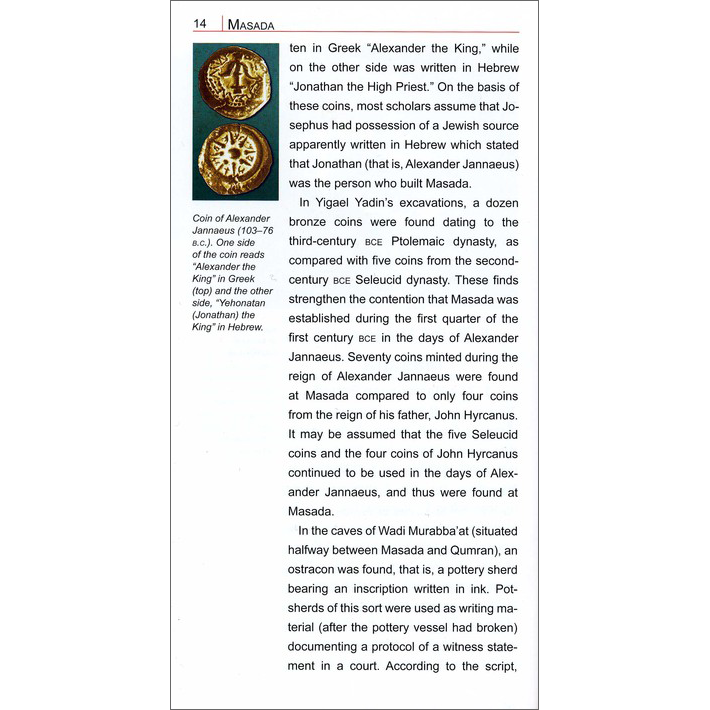Masada - An Epic Story - Field Guide from Carta
Masada - An Epic Story - Field Guide from Carta
SKU: PB404
Couldn't load pickup availability
Masada, a natural, isolated rock cliff overlooking the Dead Sea, has an awesome history. The site was populated for close to 200 years and the historic, epigraphic and archaeological evidence combined gives us an idea of the drama that engulfed the site.
The bulk of construction at Masada which one sees today was carried out by King Herod who ruled from 37 to 4 BCD. Barely two generations later, in 73 or 74 CD, Flavius Silva, provincial governor of Judea and the commander of the Tenth Roman Legion, attacked and destroyed most of the structures on Masada. What the Romans did not demolish was razed by the defenders themselves toward the end of the siege.
Following Masada's destruction, small guard units of the Roman military camped on the rock cliff from time to time until the beginning of the second century CE. Masada was populated for close to two hundred years. As a result of the extensive excavations, carried out by Yigael Yadin from 1963 to 1965, the visitor can encounter remains from all three chronological periods-the sleepy Masada guarded by a small military contingent of about twenty soldiers; the Masada in which hundreds of people were engaged in daily activities when Herol resided on the mountain, and the Masada of the rebels who sought refuge from the Roman army.
Excerpt:
"Following its destruction, small guard units of the Roman military camped from time to time west of the rock cliff until early in the second century CE. Based on what meets the eye, Masada could be considered an ordinary site which was populated for close to 200 years. However, the historic, epigraphic and archaeological evidence combined presents quite a different picture. The visitor to Masada encounters remains from three distinct historical periods, each containing its own unique characteristics:
- Masada during the time of Herod, even though at this time he was not in residence on the rock cliff
- The fortress during the Herodian period when the King resided there
- Masada of the First Jewish Revolt whose refugees dwelt on the cliff top following the destruction of Jerusalem in 70 CE, until its conquest and occupation by the Romans three to four years later."
Contents:
- Introduction
- The Hasmonean Period
- The Flight of Herod's Family to Masada During the Parthian Invasion
- Herod's Masada
- Masada in the Post-Herodian Period
- Masada After the Roman Conquest
- Byzantine Masada
- A Tour of Masada
- The Roman Siege Apparatus
- The Eastern Cistern
- The Snake Path Gate
- The Room in the Casemate Wall in which the Ben Sira Scroll was Found
- The Swimming Pool
- The Western Palace
- The Point of the Roman Breach
- The Casemate of the Scrolls
- The Synagogue
- The Water Gate
- Entrance to the North Complex
- The "Sortition" Room and a Summation of the Masada Visit
- Conclusion
- Select Bibliography
- Picture Sources
- Index
Featuring:
- Maps
- Plans
- Photographs
- Reconstructions
- Illustrations
- Full Color
Hanan Eshel is Associate Professor and former head (2002-2004) of the Department of Land of Israel Studies and Archaeology at Bar-Ilan University, Israel. He received his Ph.D. in Jewish History from The Hebrew University of Jerusalem. Among his many honors, he was awarded a Fulbright Fellowship and a Harry Starr Fellowship at Harvard University, and was visiting lecturer in Late Second Temple Judaism at Harvard Divinity School.
Dr. Eshel has directed a number of excavations in Israel, including Qumran and Ein Gedi. His publications include The Bar-Kokhba Refuge Caves (Hebrew) and The Dead Sea Scrolls and the Hasmonean State (Grand Rapids 2008), and over 200 articles.
Language: English
Soft Cover
144 pages
4 3/4×8½ in. (12×21.5 cm)
Weight: 320g (11.29 oz)
Printed in Israel
Additional Information
Additional Information
Share











